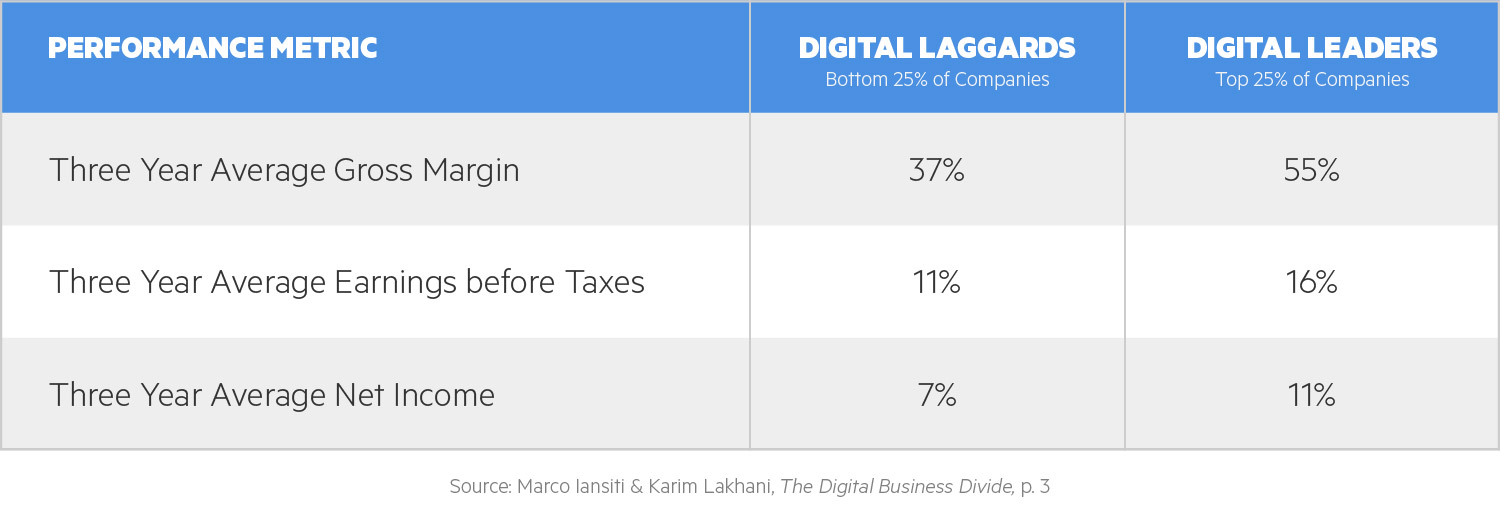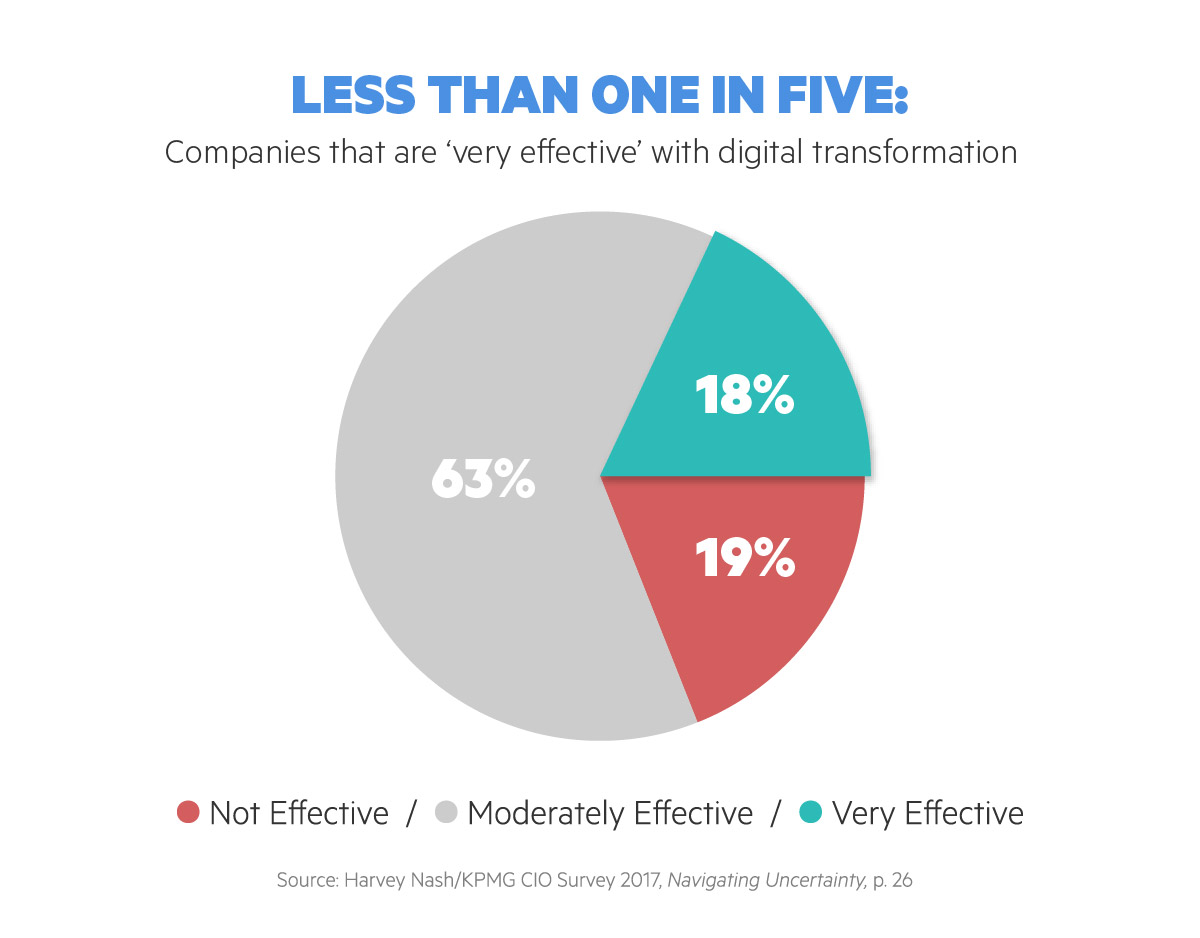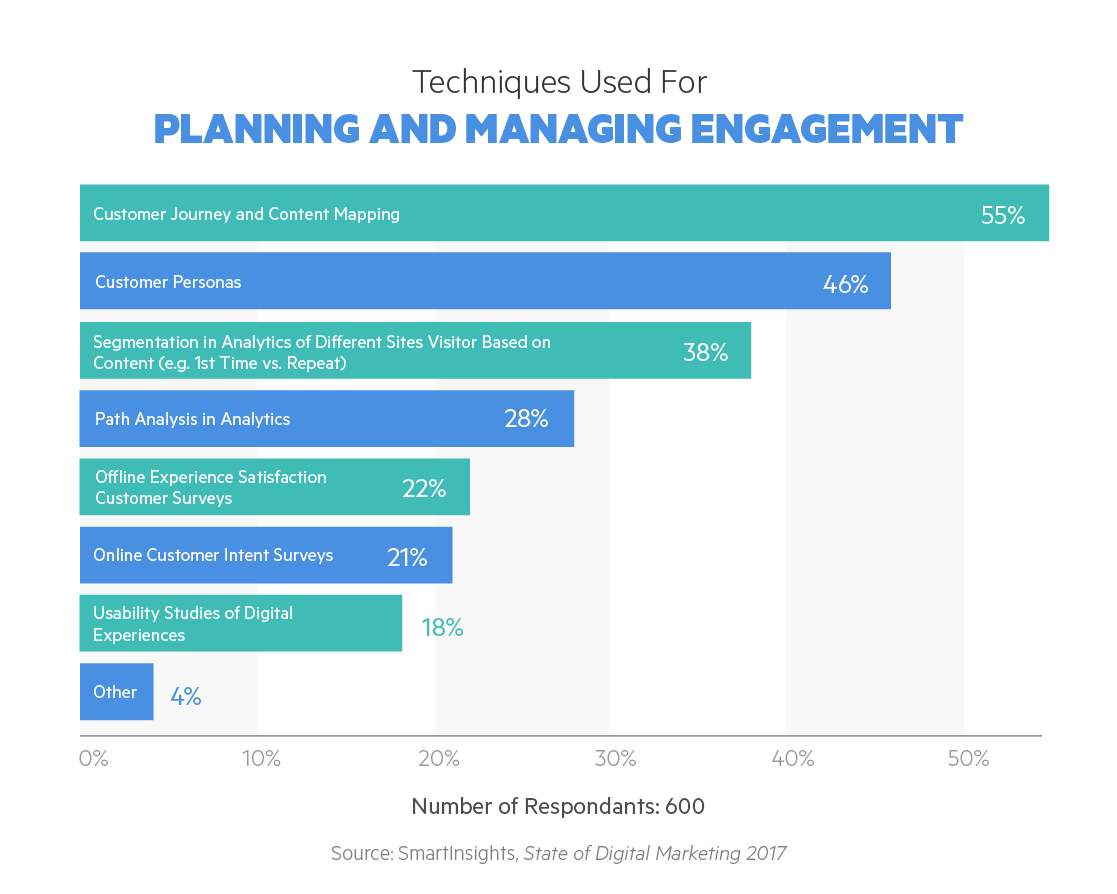
Virtuous Cycle of Digital Assessment and Investment: 5 Key Learnings
Recent research by Harvard Business School indicates digital leaders outperform digital laggard’s gross margin 55% vs. 37% over three years with minimal increases in IT spend1 (see chart below). So how do the leaders get so much more out of their digital investment?

Our clients use an assessment to baseline their organization, measure the change, and re-invest in those capabilities that are showing improvement. In order to invest accurately, they have to understand the business outcomes, how to maximize success for each enhanced capability and the measured improvement. Here are five learnings successful digital programs have in common:

Identify and Overcome Cultural and Behavioral Challenges
This is the number one reported barrier to digital effectiveness as identified by McKinsey & Co. in their latest digital study.2 Of course, we have found that there is a long list of areas to check that could put the success of the program in jeopardy, a few of which are:
- Leadership alignment
- Silo and span of control legacy
- Understanding of the new digital model and how people will fit into the new vision
- Digital innovation capabilities, including test, modify and improve principles
- Focus on the Customer
- Financial Commitments
- Risk aversion
- Communication capabilities
- Change planning, etc.

Focus on the Right Capabilities
“There is too much to do and not enough time to do it!” Most of the digital roadmaps we see are over-full. Priority and focus are critical to success. Some programs are seemingly stuck investing in “foundational” capabilities that delay celebrating their first win. Other programs are stalled force-fitting another company’s implementation in, as no two transformations are the same. Still other programs are held back by their legacy infrastructure and are at risk of failing. Prioritizing and focusing on transformational capabilities for deployment is important for momentum, funding and leadership support.

Focus on Business Outcomes Instead of Cool Widgets
A new app or Alexa skill is not a strategy. Our analysis shows that technology is a very important element, but that technology itself is not enough: technology must enable a business outcome and the business must be ready to incorporate it. A recent study by Harvey/Nash KPMG pointed out that when looking back, only 18% of executives believed the use of technology was “Very Effective” in advancing the business strategy (see chart below).3

For example, a retailer desperately wanted iPads in the hands of their associates at their physical stores. They customized their CMS system for tablets, but found shortly after roll out that reps found the tablets too bulky and heavy. Some left them in the drawers by the POS. Others would utilize them sparingly and only to look up online answers to customer questions. Still others abandoned the iPad and ran the app from their personal phones. Despite the cool technology of iPads and a new app, phase 1 did not meet objectives. In hindsight, the program was held back by a lack of user centered design and a pilot to iterate; it also could have started with the business objectives and not with the technology. Some of the examples of business objectives for a retail customer experience we see in other programs are: check inventory on the sales floor leading to x% more and y% bigger baskets, co-browse the catalog and delivery options increasing in-store online sales, and mobile price matching increasing both sales and customer satisfaction.

Assess and Iterate
Of course assessing risks at the outset of a project helps identify barriers to success. However, the digital leaders also want to assess ongoing efforts; so as to measure progress, variances, and in some cases prevent unforeseen issues. We often hear, “We never would have noticed that.” Digital leaders leverage knowledgeable third parties to highlight risks before they become a problem, share industry best practices in the areas that they were less experienced, and more importantly, ensure their vision is aiming high enough and not building on technologies that will soon be outdated. Assessing risks of an ongoing program can be critical for risk averse companies as well.

Focus on the Customer
We used to talk about B2B, B2C and B2B2C, however in today’s environment customers have more choice and control than ever before, so is it C2B? Customer experience is the battleground in many industries, used not only to attract new business, but to decrease service costs and complaints. Some clients specialize in making transactional interactions a fabulous self-service experience, such as the taxis that put credit card machines in the back seats. Digital leaders employ user centered design methods to ensure the customer journey meets the task objective and satisfies the company needs, similar to how Uber allows riders to complete the transaction before getting into the car.

This year’s number one technique to increase customer engagement is Customer Journey and Content Mapping4 (see chart above). Problem solved right? Because, it seems that many clients have some capability to do journey mapping. Yet, like the taxi example, there are varying degrees of maturity for customer journey mapping. And unfortunately the problem remains unsolved for many projects as the results are inconsistent at best. According to Couchbase5 “While 80% of IT leaders are under pressure to be constantly improving their organization’s customer experience through digital innovation, 90% of digital projects fail to meet expectations and only deliver incremental improvements.”
Is your digital transformation focused on the customer and set to deliver a great customer experience?
- https://microsoft.docs.contently.com/v/the-digital-business-divide-white-paper
- http://www.mckinsey.com/business-functions/digital-mckinsey/our-insights/culture-for-a-digital-age
- https://assets.kpmg.com/content/dam/kpmg/xx/pdf/2017/07/harvey-nash-kpmg-cio-survey-2017.pdf
- http://www.smartinsights.com/managing-digital-marketing/marketing-innovation/state-of-digital-marketing/attachment/state-of-digital-marketing-2017/
- https://info.couchbase.com/2017_CIO_Survey_Report_LP.html
This article was originally posted at FROM.digital.